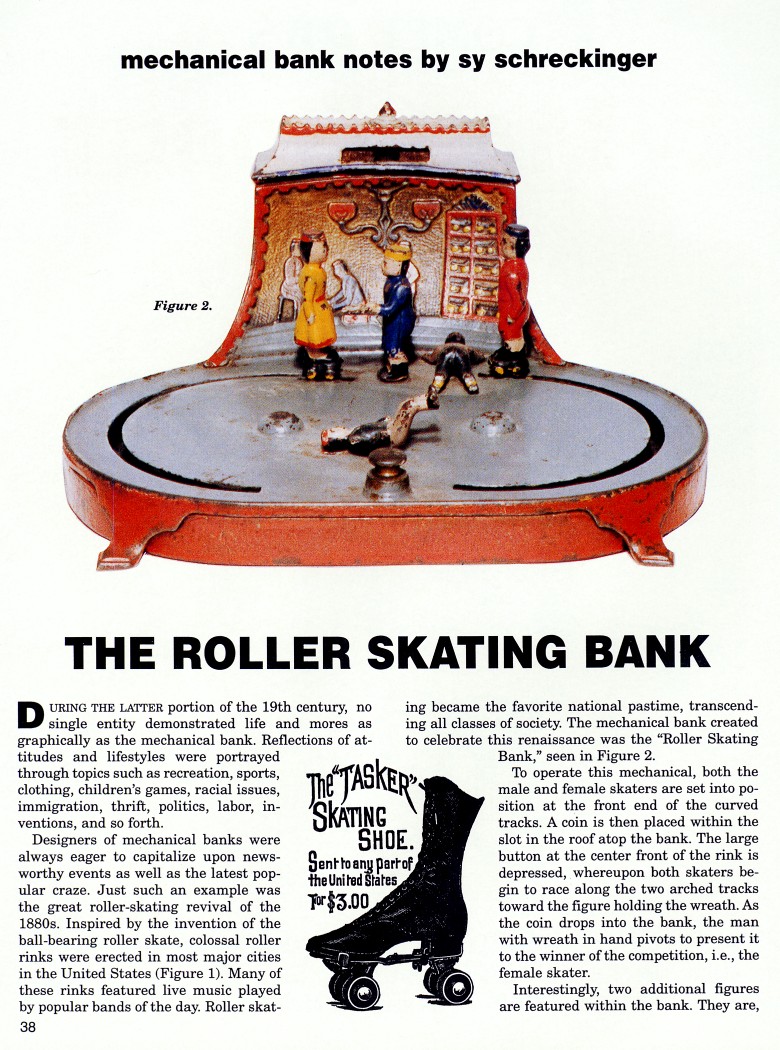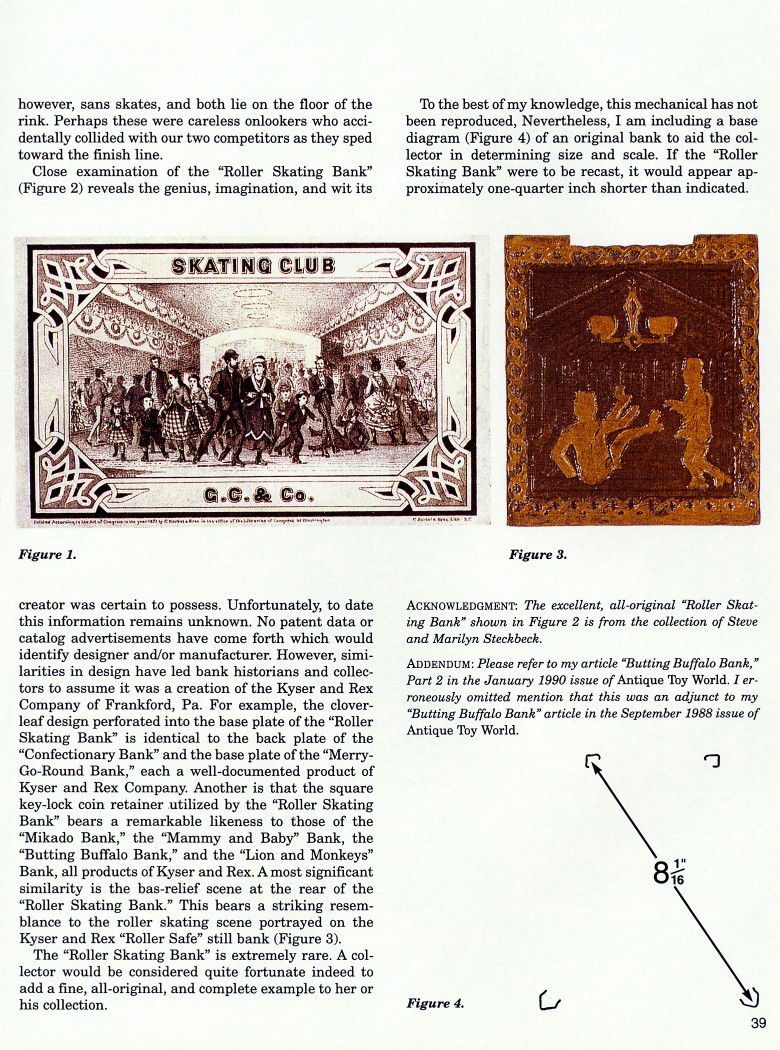|
The Roller Skating Bank
by Sy Schreckinger – ANTIQUE TOY WORLD Magazine – March, 1998
During the later portion of the 19th century, no
single entity demonstrated life and mores as graphically as the mechanical
bank. Reflections of attitudes and lifestyles were portrayed through
topics such as recreation, sports, clothing, children's games, racial
issues, immigration, thrift, politics, labor, inventions, and so forth.
Designers of mechanical banks were always eager to capitalize upon
newsworthy events as well as the latest popular craze. Just such an
example was the great roller-skating revival of the 1880s. Inspired by the
invention of the ball-bearing roller skate, colossal roller rinks were
erected in most major cities in the United States (Figure 1). Many of
these rinks featured live music played by popular bands of the day. Roller
skating became the favorite national pastime, transcending all classes of
society. The mechanical bank created to celebrate this renaissance was the
"Roller Skating Bank," seen in Figure 2.
To operate this mechanical, both the male and female skaters are set
into position at the front end of the curved tracks. A coin is then placed
within the slot in the roof atop the bank. The large button at the center
front of the rink is depressed, whereupon both skaters begin to race along
the two arched tracks toward the figure holding the wreath. As the coin
drops into the bank, the man with wreath in hand pivots to present it to
the winner of the competition, i.e., the female skater.
Interestingly, two additional figures are featured within the bank.
They are, however, sans skates, and both lie on the floor of the rink.
Perhaps these were careless onlookers who accidentally collided with our
two competitors as they sped toward the finish line.
Close examination of the "Roller Skating Bank" (Figure 2) reveals the
genius, imagination, and wit its creator was certain to possess.
Unfortunately, to date this information remains unknown. No patent data or
catalog advertisements have come forth which would identify designer
and/or manufacturer. However, similarities in design have led bank
historians and collectors to assume it was a creation of the Kyser and Rex
Company of Frankford, Pa. For example, the cloverleaf design perforated
into the base plate of the "Roller Skating Bank" is identical to the back
plate of the "Confectionary Bank" and the base plate of the "MerryGo-Round
Bank," each a well-documented product of Kyser and Rex Company. Another is
that the square key-lock coin retainer utilized by the "Roller Skating
Bank" bears a remarkable likeness to those of the "Mikado Bank," the
"Mammy and Baby" Bank, the "Butting Buffalo Bank," and the "Lion and
Monkeys" Bank, all products of Kyser and Rex. A most significant
similarity is the bas-relief scene at the rear of the "Roller Skating
Bank." This bears a striking resemblance to the roller skating scene
portrayed on the Kyser and Rex "Roller Safe" still bank (Figure 3).
The "Roller Skating Bank" is extremely rare. A collector would be
considered quite fortunate indeed to add a fine, all-original, and
complete example to her or his collection.
To the best of my knowledge, this mechanical has not been reproduced,
Nevertheless, I am including a base diagram (Figure 4) of an original bank
to aid the collector in determining size and scale. If the "Roller Skating
Bank" were to be recast, it would appear approximately one-quarter inch
shorter than indicated.
ACKNOWLEDGMENT: The excellent, all-original "Roller Skating Bank"
shown in Figure 2 is from the collection of Steve and Marilyn Steckbeck.
ADDENDUM: Please refer to my article "Butting Buffalo Bank,"
Part 2 in the January 1998 issue of Antique Toy World. I erroneously
omitted mention that this was an adjunct to my "Butting Buffalo Bank"
article in the September 1988 issue of Antique Toy World.
|


